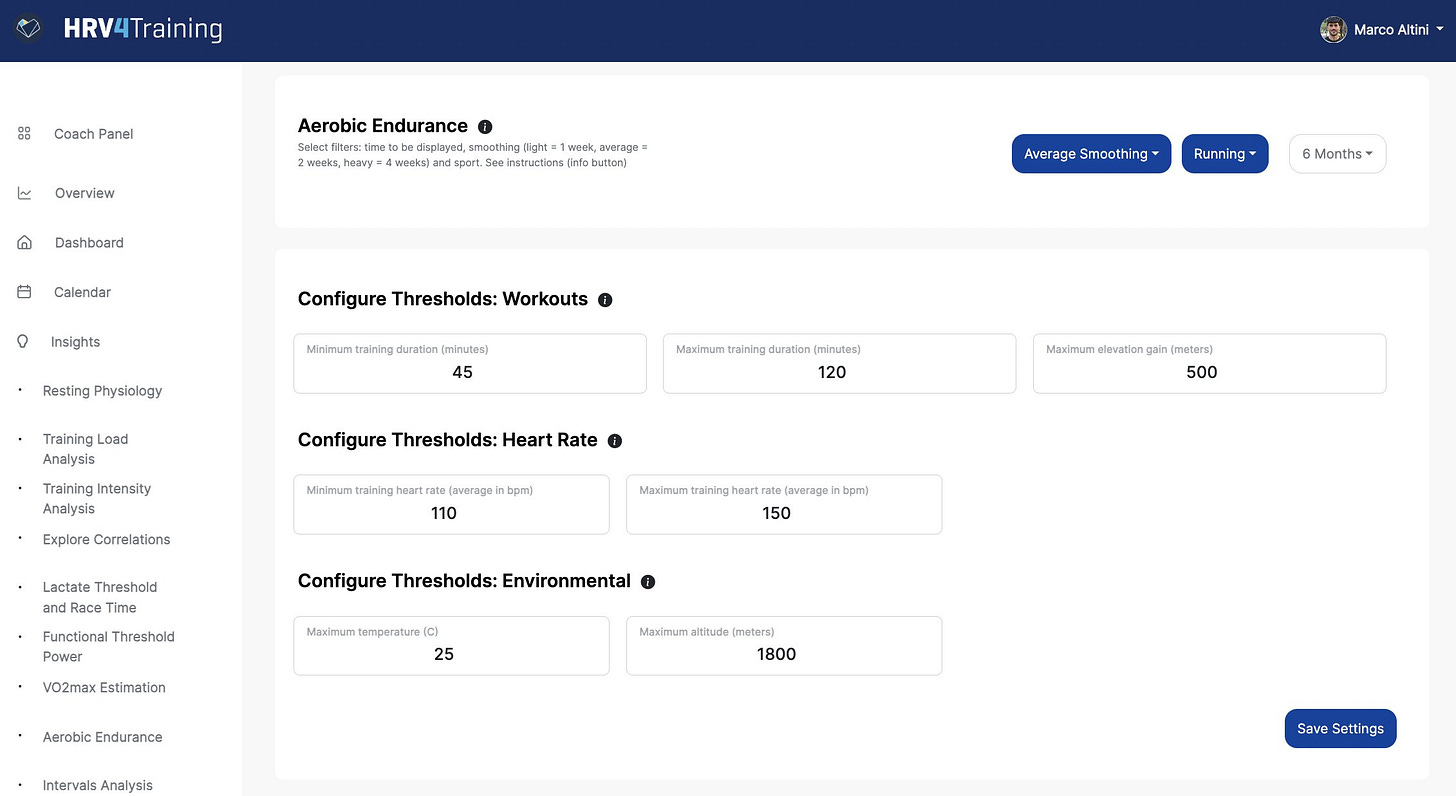I’ve just released an improvement in the aerobic efficiency feature in HRV4Training Pro (which you can try here, if you use our app already)
With this update, you will be able to see the aerobic efficiency value for each individual workout (among the ones filtered in the analysis), and not only the current average or the graph over time.
What’s aerobic efficiency? Aerobic efficiency is computed as external load over internal load (e.g. pace over heart rate or power over heart rate). This is a good indication of long-term changes in cardiorespiratory fitness (and also the main predictor in all decent VO2max models).
I have added the individual workout aerobic efficiency as I think it can be helpful in certain cases, for example:
an abnormal increase might signal a quite suppressed heart rate, hence fatigue, more than a change in fitness
when coming back from sickness, you might want to see how things have changed with respect to to pre-sickness. For example, my values shown below show that my physiology was back to normal post-food poisoning, similarly to morning physiology.
Below you can see how I configure this analysis for running data: workouts of at least 45 minutes and up to 2 hours, heart rate in zones 1-2 (but not too low), limited elevation gain, and excluding hot days.
While below is another example, with aerobic efficiency values:
before the marathon (before October 15th): ~90
with jetlag after 30 hours awake (October 12th): 85
post-marathon (after October 15th): 85-81
This tool can serve as a simple way to track how your body is doing in a number of different situations, by computing the ratio of external (e.g. pace or power) vs internal (e.g. heart rate) load.
The individual values for each workout (what you see in the table below) are available in HRV4Training Pro with the update that I have just released.
I hope you will find this update useful, thank you for your support.
Marco holds a PhD cum laude in applied machine learning, a M.Sc. cum laude in computer science engineering, and a M.Sc. cum laude in human movement sciences and high-performance coaching.
He has published more than 50 papers and patents at the intersection between physiology, health, technology, and human performance.
He is co-founder of HRV4Training, advisor at Oura, guest lecturer at VU Amsterdam, and editor for IEEE Pervasive Computing Magazine. He loves running.
Social:









Hi Mario,
Thanks for sharing this. I really like the concept of Aerobic Efficiency. Pace over heart rate as an indicator of cardiorespiratory fitness seems quite intuitive to me and actually way more simple than VO2max, for instance. It may be due to my own narrow perception, but how does it come that there’s so much fuss about VO2max, HRV, etc. but nobody has been promoting Aerobic Efficiency so far?
Anyway, as I like the concept, I’d like to understand better how you do compute Aerobic Efficiency in HRV4Training? It looks like kind of a baselined number between 1 and 100 but I can’t really make sense of it. In your example in the blogpost there’s a pace of 5:23 min/km and a heart rate of 125 bpm which equals an Aerobic Efficiency of 89. Dividing 5:23 by 125 obviously does not give 89, so what kind of formulae do you apply do compute Aerobic Efficiency? Is this the generally accepted way of computing Aerobic Efficiency or is it the unique way of HRV4Training?
Cheers,
Michael